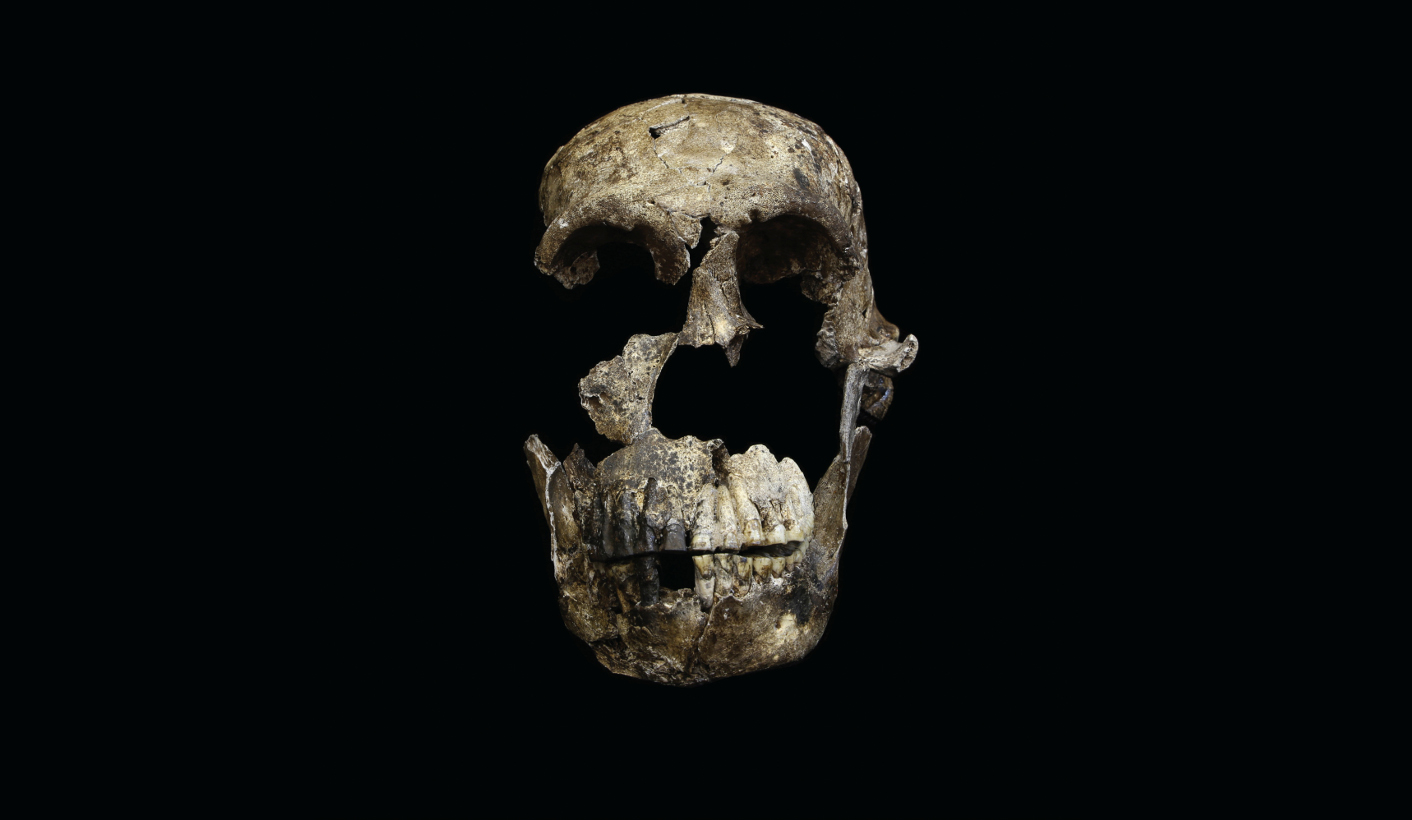In a new study that appears in the journal Proceedings of the National Academy of Sciences, a team of international researchers were surprised to find that Homo naledi, a small hominin, had a remarkably complex human shaped brain.
This discovery goes against traditional evolutionary thought that holds that it was the emergence of big brains that drove human evolution.
The team, which included members of Wits University, were able to study naledi’s brain by examining the endocasts – the imprint that the brain left upon the skull.
They found traces of the brain shape on a collection of skull fragments and partial crania from five adult individuals that had been excavated from the Rising Star cave, in the Cradle of Humankind near Johannesburg. One of these crania contained the clear imprint of the convolutions on the surface of the brain’s left frontal lobe.
“This is the skull I’ve been waiting for my whole career,” the lead author in the study, Ralph Holloway of Columbia University, remarked in a statement.
/file/dailymaverick/wp-content/uploads/naledi-pic1.jpg)
The team found that naledi’s frontal lobe was similar to humans, but differed to the great apes. Other hominins in our family line share features of this frontal lobe.
What this brain allowed naledi to do, believe the researchers, is make sophisticated stone tools and have complicated social structures. But the researchers won’t go so far as to say whether this brain allowed for language.
“It’s too soon to speculate about language or communication in Homo naledi,” explained another co-author Shawn Hurst. “But today human language relies upon this brain region.”
naledi’s human-like brain could explain another mystery associated with the species.
In 2013 naledi was discovered in the Dinaledi Chamber in the Rising Star cave system, by a group of amateur cavers. Since then the puzzle is how these creatures made it through the pitch darkness to the hard-to-reach chamber.
/file/dailymaverick/wp-content/uploads/naledi-pic2.jpg)
Wits University Professor Lee Berger and his team have suggested the controversial theory that this species was disposing of its dead.
“You can’t say that just because Homo naledi had a small brain, those levels of complex behaviour aren’t there. The complex mechanisms as far as we can see in the external morphology of the brain are there,” said Berger.
In 2017 there was another surprise when geologists dated the skeletons in the Dinaledi chamber to between 236,000 and 335,000 years ago. This is the same period when modern humans emerged in Africa and were believed to be making stone tools.
“Until this moment we had assumed that these tools were being made by modern humans, but now we have a hominid that has a complex brain and all the bodily features that enable complex tool use, right in the middle of all this,” said Berger.
“Are we certain we made those tools? They (archaeologists) have to prove that now.”
Professor of Stone Age Archaeology, Marlize Lombard, at the University of Johannesburg, explained that modern human behaviours associated with complex tool use involved the use of the temporal, parietal and frontal areas of the brain.
“A shared and integrated fronto-parietal network is key in human spatial attention, space-related behaviours and fluid reasoning/intelligence, which is required for complex tool use,” said Lombard, who was not part of the naledi brain study.
“This does not negate the possibility that H. naledi made and used tools, it simply means that our challenge to understand the cultural and cognitive capacities represented in South Africa during the Middle Stone Age is much more complex than previously imagined.”
/file/dailymaverick/wp-content/uploads/naledi-pic-3.jpg)
Dr Emiliano Bruner, of the Centro Nacional de Investigación sobre la Evolución Humana, in Spain, warned that more needed to be done to learn about naledi’s brain structure.
“We have only a few skull fragments of a few isolated specimens ... too little to know about the ‘brain’ of a species,” Bruner, who was also not part of the study, explained.
“... All human species (Homo) have the same brain form, so it is not surprising that Homo naledi has a Homo brain ... But, as the authors stressed, what is interesting is that it has a human brain form despite not having a human brain size.”
The thinking hominid with a pint-sized brain has many more mysteries associated with it. As yet paleo-anthropologists still have to work out on which branch it sits on our family tree and whether we are directly related.
“We don’t know where it came from and we don’t know where it goes. It could be the root of the genus Homo, it could have hybridised with us, we just don’t know yet,” said Berger.
“And I think almost anything is possible”. DM




